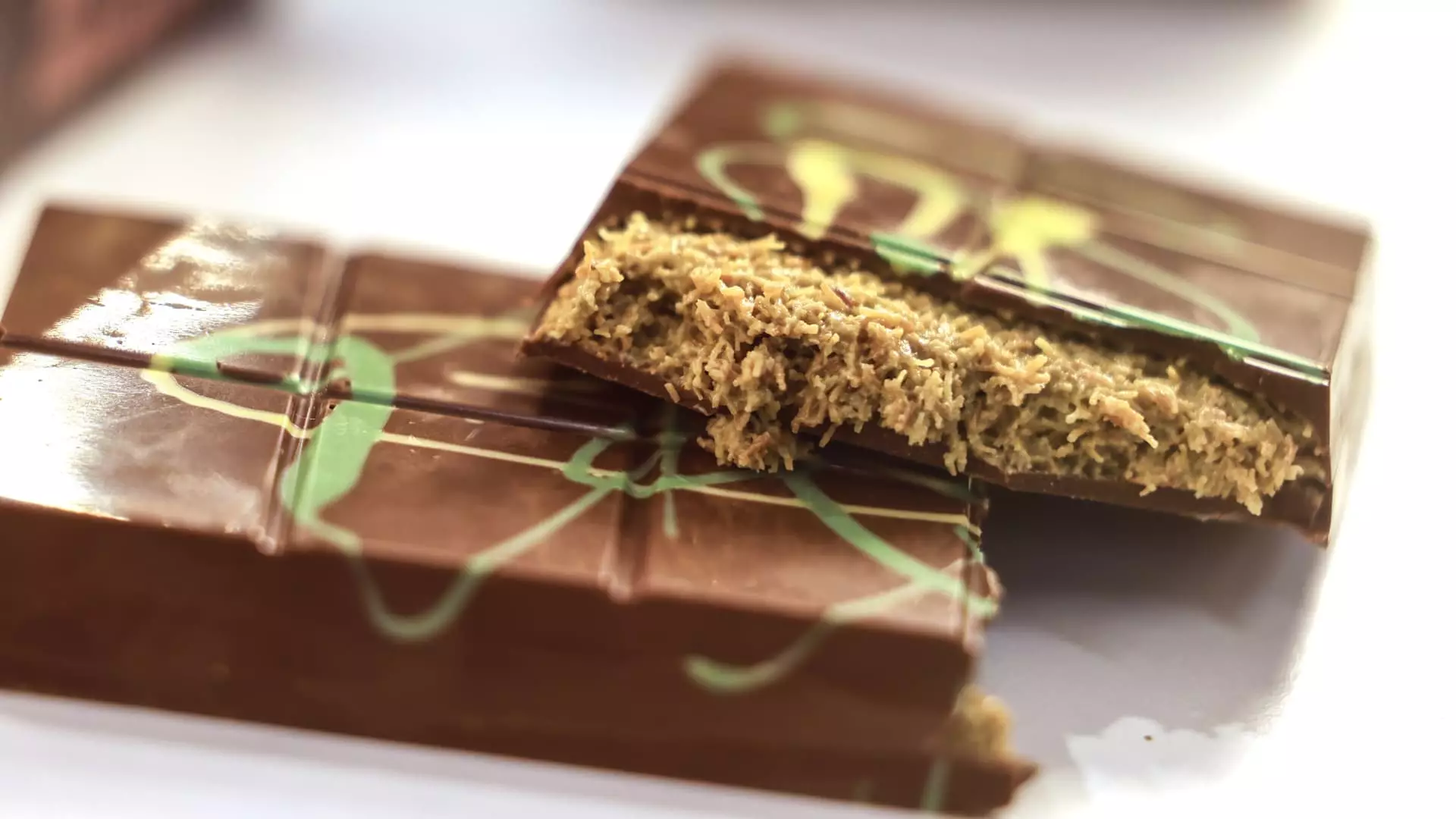The culinary world is no stranger to trends that sweep through like wildfire, but the phenomenon of Dubai chocolate has captured the taste buds and imaginations of many. What began as a simple craving during Sarah Hamouda’s pregnancy quickly morphed into an international obsession. This isn’t merely about creating a delicious sweet treat; it’s a testament to how a single innovative idea can captivate a global audience, igniting a deluge of imitations and limited-edition offerings from famous brands. The triumph of Dubai chocolate is not just in its unique flavors—pistachio cream and kadayif wrapped in sumptuous chocolate—but in its ability to inspire both culinary creativity and commercial competition.
The Domino Effect of Popularity
As word of this delightful treat spread, so too did its influence on the retail and food service sectors. Brands like Shake Shack, Crumbl, and even Starbucks have jumped on the bandwagon, crafting limited-edition items designed to harness the growing enthusiasm around Dubai chocolate. Shake Shack’s milkshake and Crumbl’s brownie reinterpretations capture not only a trending flavor but also the zeitgeist of a generation eager for new experiences—especially Gen Z, whom Starbucks reported saw a notable uptick in sales from their Dubai chocolate-inspired beverages. This trend exemplifies the way food fads can shape consumer desires and, in turn, influence corporate strategies across industries.
The Imitation Game
However, such rampant popularity does not come without complications. The lack of international trademark protections for Dubai chocolate opens the floodgates for imitators. Take, for instance, Lindt, an established giant in the chocolate world, who swiftly launched their own rendition in response to the overwhelming demand. This raises a pertinent question: does the proliferation of “dupes,” especially with iconic brands jumping into the fray, dilute the essence of what made Dubai chocolate special in the first place? While competition can stimulate innovation, rapidly reproducing a unique flavor risks transforming it from an artisanal delicacy into another product on the supermarket shelf—one that may lose the narrative of authenticity that consumers crave.
The Local vs. Global Dilemma
Another worry is the commercialization of a concept that began as a heartfelt creation. The original bars, available exclusively in Dubai and carefully crafted by local artisans, face the possibility of losing their connection to the roots that birthed them. As local shops attempt to replicate the success with their own versions, they must carefully navigate the balance between honoring the traditional flavors and appealing to wider commercial interests. New York City’s Nuts Factory, claiming to be among the first to offer a local version of the Dubai chocolate, faced increased demand that led to a drastic overhaul of their production methods. This pivot from small-scale craftsmanship to mass production encapsulates the dilemma many local artisans face today—can they maintain their passion for quality while meeting the demands of an insatiable market?
The Tantalizing Future Ahead
Despite the complexities that accompany its rapid rise, the public’s unwavering enthusiasm for Dubai chocolate points to a deeper cultural shift toward flavor exploration and culinary diverse experiences. The upward trajectory in chocolate-pistachio flavor combinations within restaurant menus, as noted by Technomic, indicates a growing acceptance and curiosity among diners. This trend invites not only chocolate lovers but also food innovators to experiment with diverse flavor profiles, reshaping the desserts of tomorrow. The emergence of companies like Trader Joe’s, selling affordable dupes of Dubai chocolate, suggests that the allure is not just reserved for the elite but is accessible to all—democratizing the taste of luxury.
Ultimately, the rise of Dubai chocolate reflects not just a momentary food trend but showcases how culinary innovations can inspire wide-reaching changes in consumer behavior and industry standards. As we watch how this delectable saga unfolds, it is clear that the world remains hungry for sweet experiences that blend tradition with innovation. The true victory lies in preserving a unique flavor while allowing it to evolve in a manner that delights and engages diverse palates across the globe.


Leave a Reply